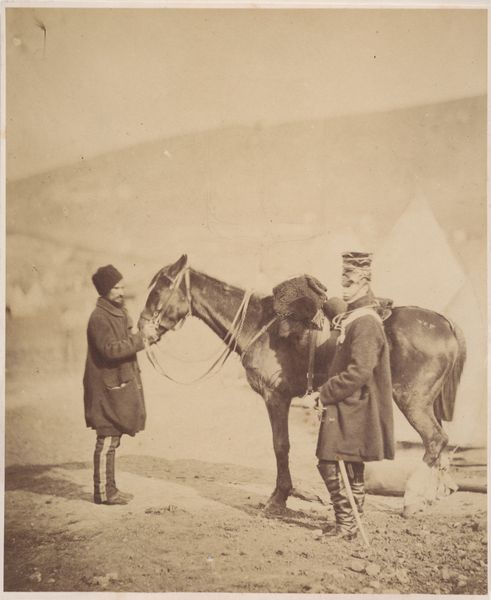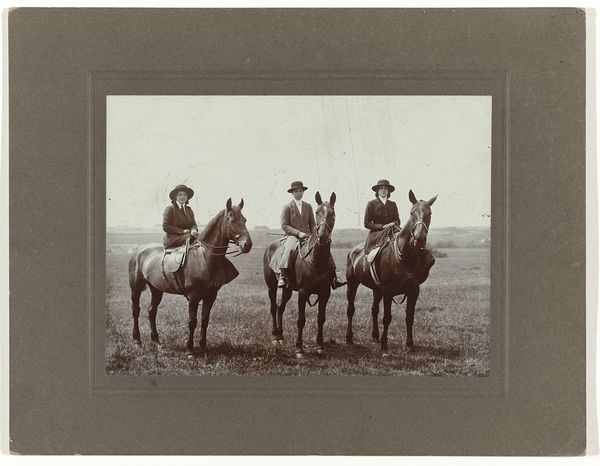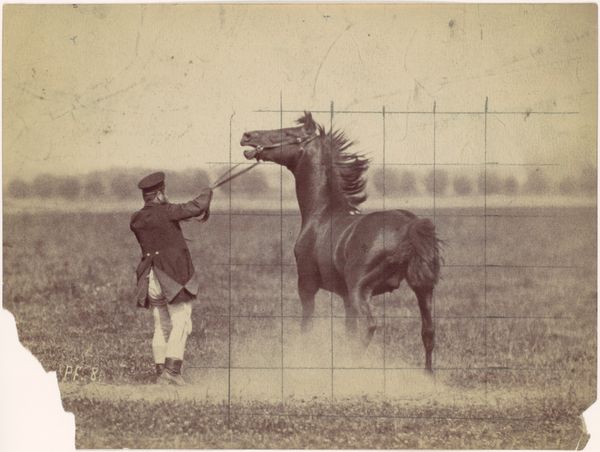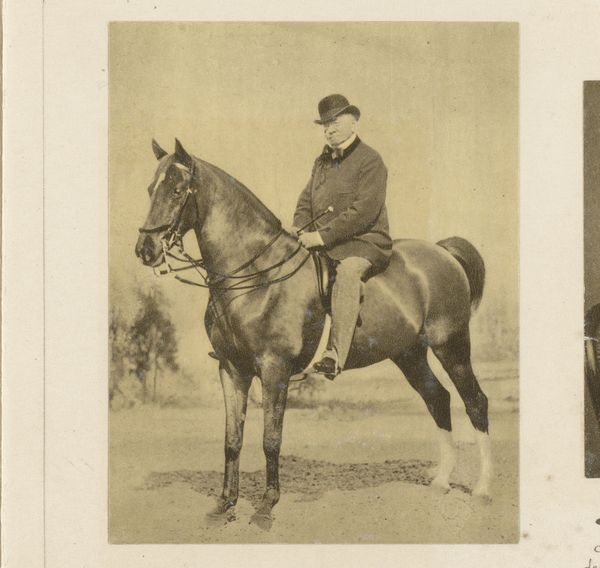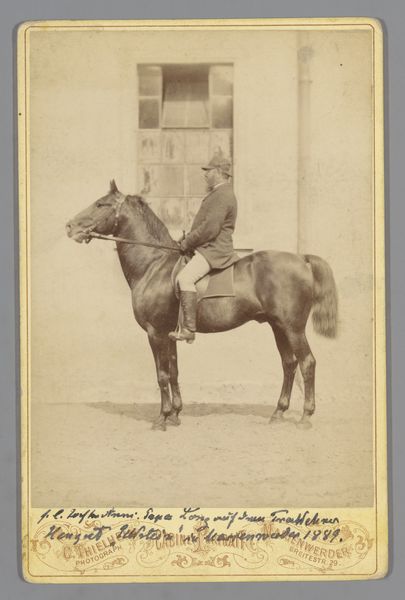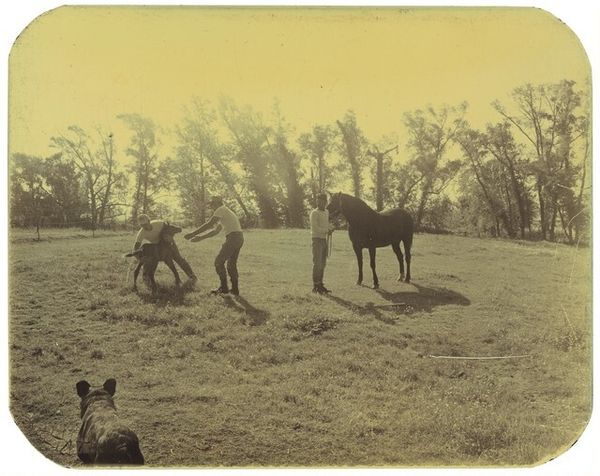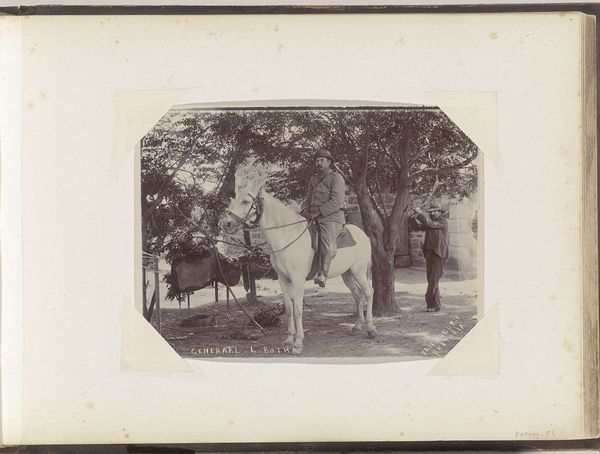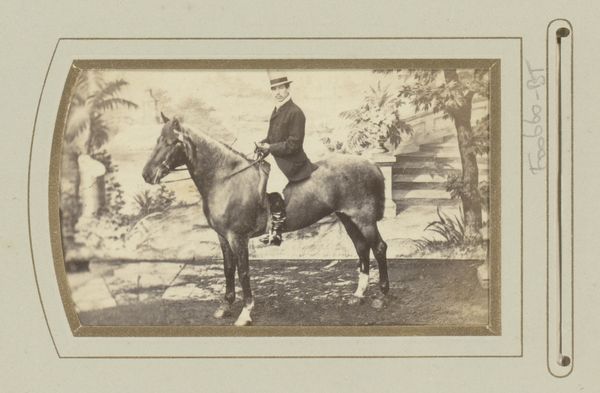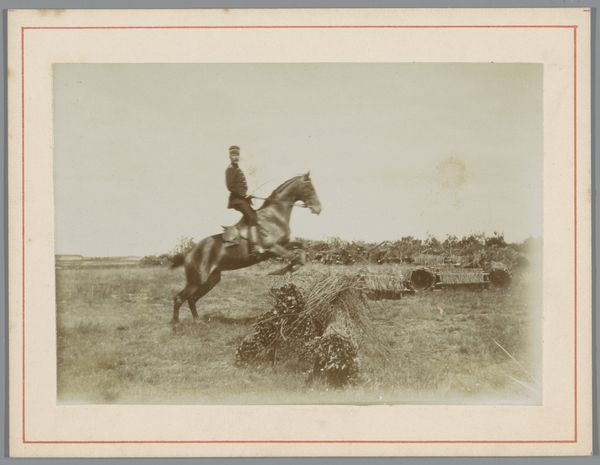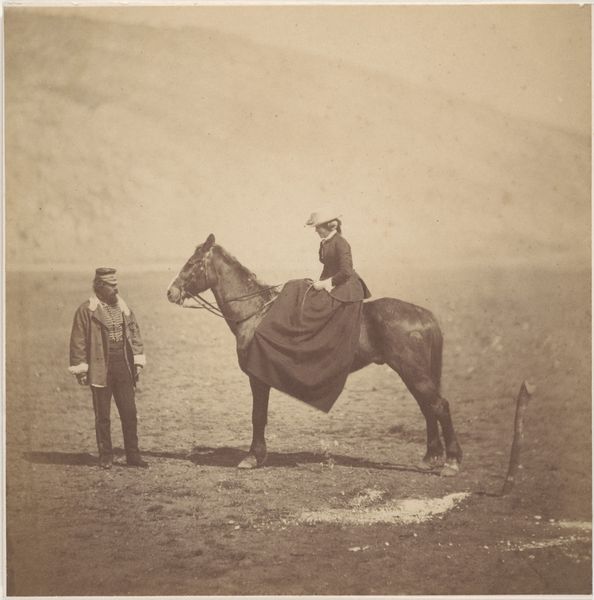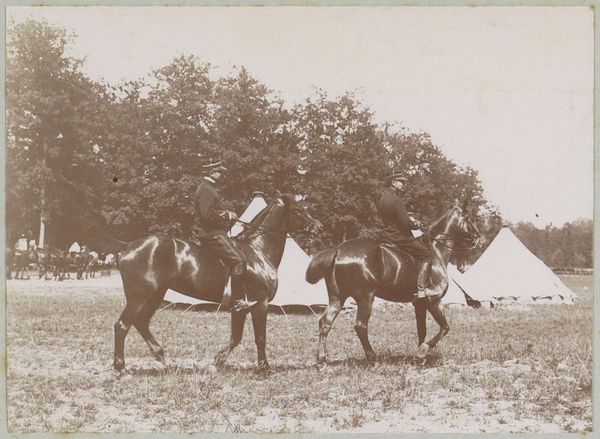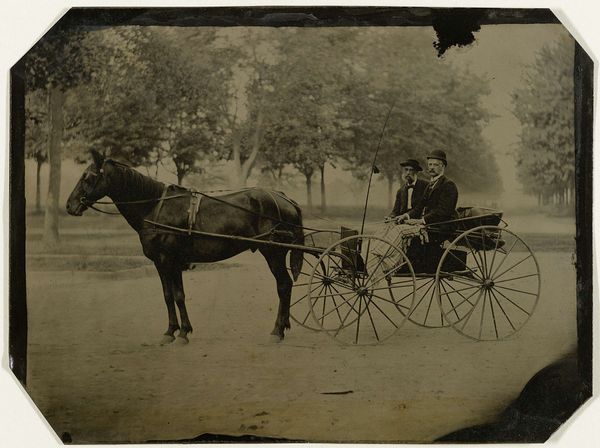![[Lady Canning on her Black Arab and Lord Clyde, Commander in Chief] by Jean Baptiste Oscar Mallitte](/_next/image?url=https%3A%2F%2Fd2w8kbdekdi1gv.cloudfront.net%2FeyJidWNrZXQiOiAiYXJ0ZXJhLWltYWdlcy1idWNrZXQiLCAia2V5IjogImFydHdvcmtzL2UxZTY3ZWQ0LTQ1ZjItNGZkMi1hNDIyLTljZmU2MGQxMWZlOC9lMWU2N2VkNC00NWYyLTRmZDItYTQyMi05Y2ZlNjBkMTFmZThfZnVsbC5qcGciLCAiZWRpdHMiOiB7InJlc2l6ZSI6IHsid2lkdGgiOiAxOTIwLCAiaGVpZ2h0IjogMTkyMCwgImZpdCI6ICJpbnNpZGUifX19&w=3840&q=75)
[Lady Canning on her Black Arab and Lord Clyde, Commander in Chief] 1858 - 1861
0:00
0:00
Dimensions: Image: 14.9 x 19.2 cm (5 7/8 x 7 9/16 in.) Mount: 33.1 x 26 cm (13 1/16 x 10 1/4 in.)
Copyright: Public Domain
Curator: Jean Baptiste Oscar Mallitte’s photograph, titled *Lady Canning on her Black Arab and Lord Clyde, Commander in Chief*, captured between 1858 and 1861, presents a fascinating study in contrasts. The print, a marvel of early photographic technique, immediately suggests ideas about gender and power, no? Editor: It strikes me as an exceptionally balanced, yet unsettling image. There's a stillness, a quiet grandeur but the mood seems vaguely melancholic like it is somehow drained of vibrant energy despite the bright landscape depicted behind them. Curator: The composition itself, with Lady Canning elevated on her striking black horse and flanked by the two men, creates a distinct visual hierarchy. Lady Canning's silhouette against the landscape evokes an almost mythic presence. Furthermore, the monochromatic tones contribute a certain timelessness to the narrative captured. Editor: And what a strange narrative it hints at. The theatrical poses against what appears to be some military encampment and Lord Clyde practically lurking, almost obscured, adds a palpable layer of intrigue. The landscape itself almost suggests a stage. Is there an undercurrent of tension between these figures? I almost feel as if something else is suggested other than their actual status in this image. Curator: Certainly. The juxtaposition of Lady Canning's refined attire and the military setting infuses the scene with considerable complexity. Notice the almost rigid geometry of the tents juxtaposed to the free-flowing design of the dress Lady Canning is wearing. Such contrasts and tensions between civilization and the campaign field are crucial in decoding its intended message. Editor: Yes, absolutely. And consider how the sepia tone, almost uniform across the frame, almost softens any possible drama or conflict into this nostalgic tableau. There’s something about the lack of vividness that ironically underscores its artificiality. As though, it seems constructed more than a fleeting snapshot of historical significance. It seems highly contrived to elicit a response that the audience would admire in that time, a symbol that resonates into a more current significance. Curator: Precisely! Mallitte’s masterful use of light and shadow, tone and arrangement offers a powerful meditation on status, control, and representation. These photographic compositions, are never just documents, they are carefully curated statements that offer avenues to unpack societal undercurrents in times of enormous significance and impact on Victorian Society. Editor: Exactly. I think by engaging with both the formal structures of the image as well as the contextual narrative, it makes us appreciate its power far more now than if we had simply viewed this moment without analyzing and giving credence to its implied complexity. It provides a lens through which we are offered a complex and curated historical perspective.
Comments
No comments
Be the first to comment and join the conversation on the ultimate creative platform.
